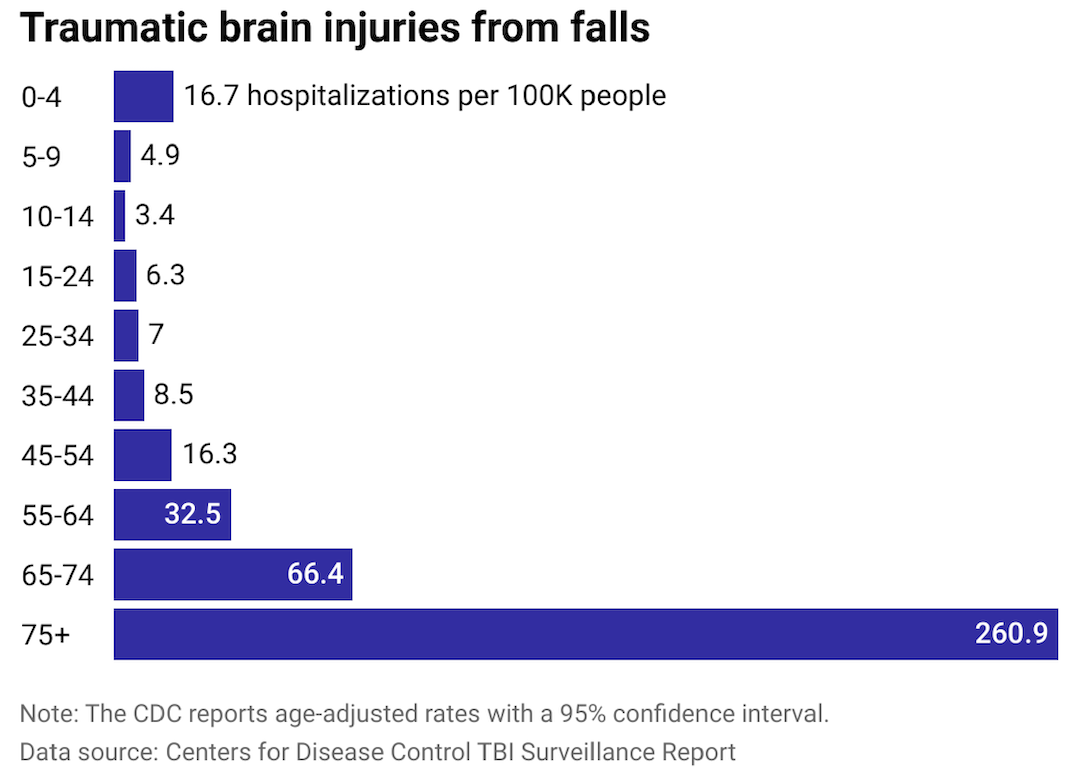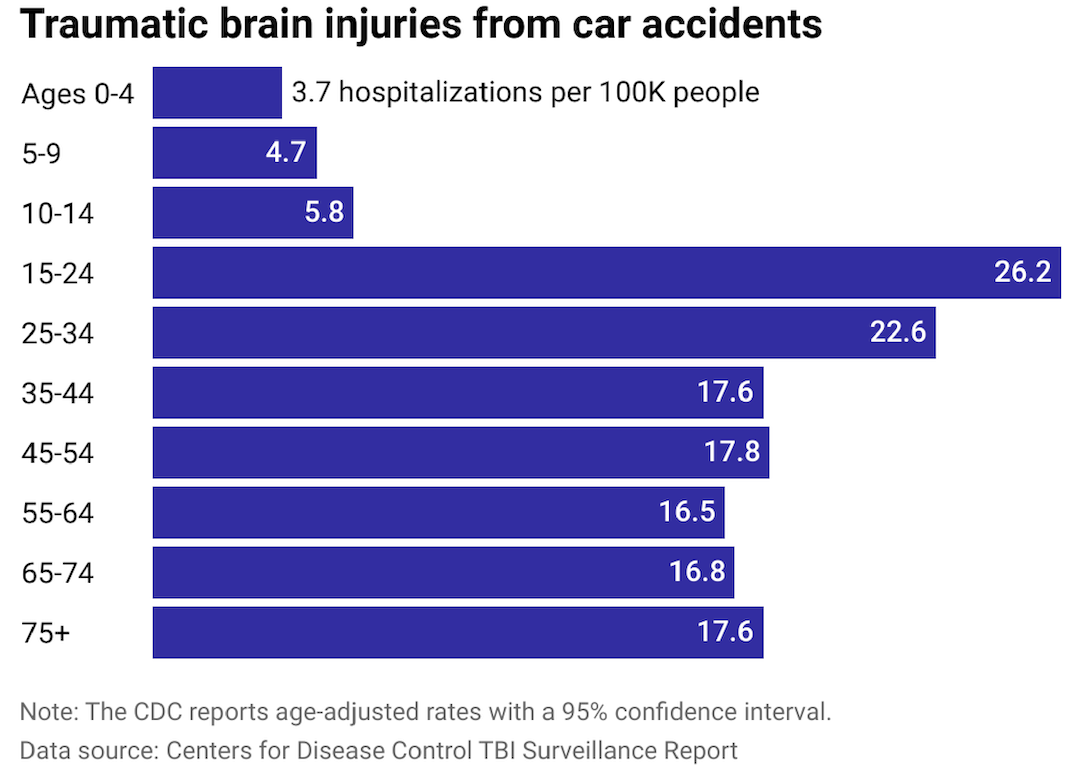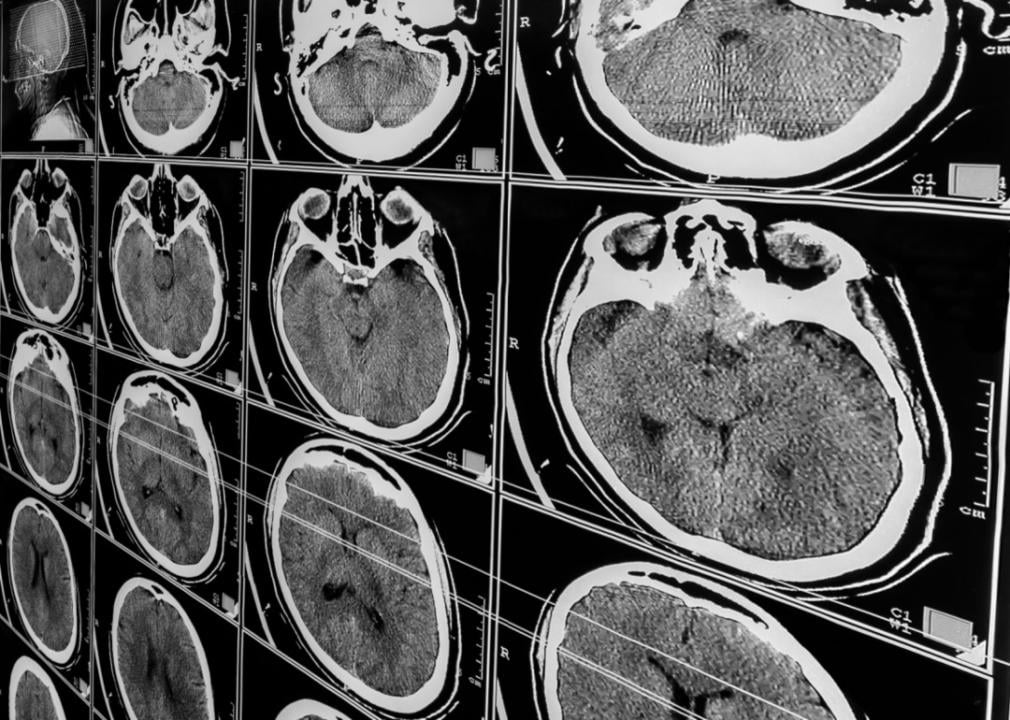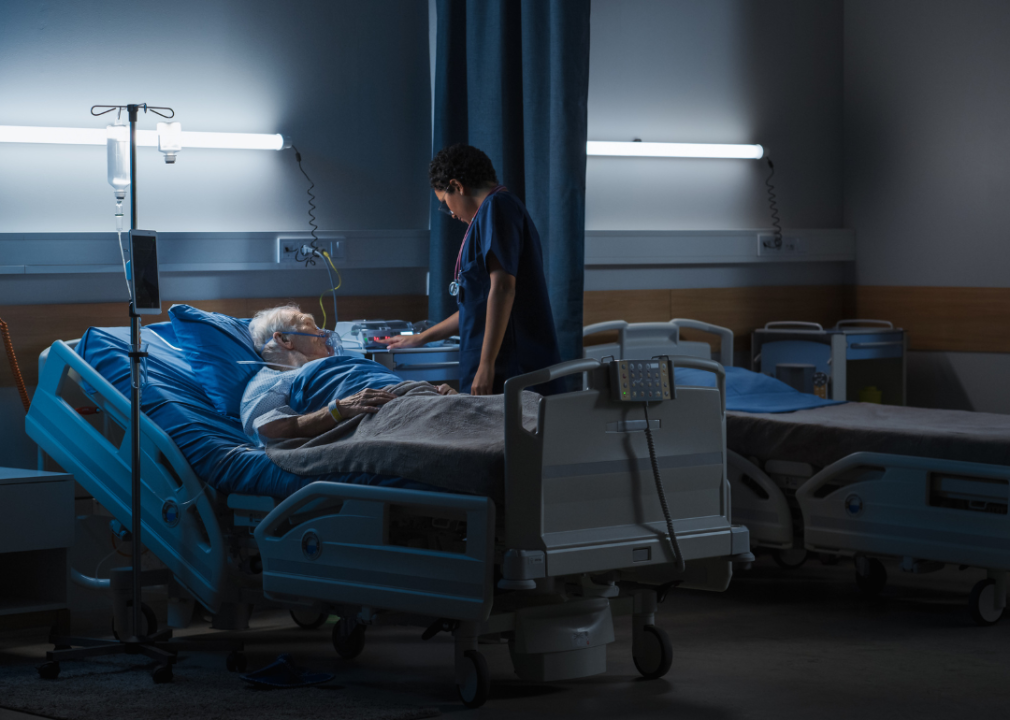6 most common causes of traumatic brain injuries
Dmitriev Mikhail // Shutterstock
6 most common causes of traumatic brain injuries
An MRI scan of a traumatic brain injury.
Traumatic brain injury, also referred to as intracranial injury, is caused by an external impact, such as a blow or jolt, or a penetrating injury, such as a gunshot, to the head. This trauma may cause the brain to shift or twist within the skull cavity or to change its use of chemicals and energy, resulting in headaches, disorientation, and sensitivity to light and sound. In some cases, these changes are brief and don’t result in long-term brain damage; however, with more severe injuries, these effects may persist and result in long-term health problems, including brain cell damage. The leading causes of TBIs are falls and motor vehicle accidents, though domestic violence, work or military injuries, and sports or recreational activities are also known to cause TBIs in varying degrees.
Traumatic brain injuries are a major cause of death and disability, according to the Centers for Disease Control and Prevention. TBIs are categorized as mild, moderate, or severe—though these categories don’t necessarily indicate the level of long-term severity. The lingering effects of even mild trauma can vary case by case. A mild traumatic brain injury is generally called a concussion, and in most cases, neither a skull fracture nor brain bleeding occurs; however, with a moderate to severe traumatic brain injury, there is usually a visible skull fracture. A person can experience an extended loss of consciousness and heightened symptoms, including headaches and nausea, convulsions or seizures, and loss of coordination and numbness in their extremities. Having multiple mild traumatic brain injuries can escalate a person’s risk for effects generally associated with moderate or severe injury, including chronic traumatic encephalopathy, a deleterious brain disorder.
Because many cases of TBI go undiagnosed or misdiagnosed as other forms of trauma, hospitalization data is essential in evaluating the number of TBI-related injuries and the most common causes of TBIs. To help readers understand this crucial correlation, Taxman, Pollock, Murray & Bekkerman, LLC looked at a 2017 report on traumatic brain injuries from the CDC—the most recent report to include hospitalization numbers—to pull insights and trends about TBI-related hospitalizations in the U.S. Data on TBI-related death rates comes from a 2019 CDC report that did not include hospitalization information.
![]()

Taxman, Pollock, Murray & Bekkerman, LLC
Car accidents and falls are the biggest causes of hospitalizations from brain injuries
Bar chart of hospitalizations for TBI by cause
Unintentional falls caused nearly half of all traumatic brain injury-related hospitalizations (49.1%). Falls also accounted for the greatest number of TBI-involved deaths—29.9% in 2019, up from 28% in 2017. While the rate of self-harm-related hospitalizations is far lower than that of fall-related ones, self-harm-related deaths were higher—by nearly 7% in 2017 and just under 6% in 2019. This is attributable to the fact that most self-inflicted TBIs are associated with attempted death by suicide.
As noted in the above graph, “other” can be somewhat misleading in terms of how it relates to the middle categories (car accident, assault, struck by object) because injuries with undetermined intent and lack of cause are included. According to the CDC report, falls of undetermined intent were not included in the number of unintentional falls; had they been, that number would likely have demonstrated an even greater disparity between fall-related TBIs and all other causes.
Gorodenkoff // Shutterstock
Adults 75 and over had the highest rates of hospitalizations from brain injuries
Elderly patient in hospital bed being cared for by a nurse.
The CDC reports that the most hospitalizations and fatalities associated with TBI per 100,000 people occur among adults aged 75 and over. Older people have an increased risk for TBI due to vascular changes that occur during the aging process. Some of these include changes to the membrane lining the brain tissue, increased vein fragility, and hardening of arteries in the brain. Additionally, many older people take anticoagulants to reduce their risk of ischemic stroke; an unfortunate side effect of such medications is an increased risk of bleeding. All of these conditions increase the risk for brain hemorrhages, even with only a slight TBI.

Taxman, Pollock, Murray & Bekkerman, LLC
Adults 75 and over who were hospitalized for brain injuries were most often injured from falls
Bar chart of rate of fall-related hospitalizations for TBI broken down by age
People 75 and over are more likely to be hospitalized for TBI than people in any other age group, and unintentional falls are the leading cause. The elderly are at a greater risk of falling than other age groups because of balance issues, muscular weakness, and vision loss—all commonly associated with the aging process. Other medical conditions such as heart disease, dementia, and low blood pressure (hypotension)—which can cause dizziness and losses of consciousness—are also risk factors. Unfortunately, older bodies typically do not heal as efficiently as younger ones, giving rise to extended healing periods and an increased risk of other ailments.
Canva
Brain injury hospitalization among infants and toddlers was also most often caused by falls
A toddler climbing some stairs.
The most common causes of significant brain injuries in young children are falls—usually from their beds, down the stairs, or in the bath—and assaults involving head injuries. Severe head trauma can result in brain damage; however, not all brain injuries are permanent, and many children recover with no long-term impact. The likelihood that an infant has significant brain damage increases with the amount of force used to cause the head injury. Several factors indicate the possible severity of a traumatic brain injury: significant loss of consciousness or memory around the time of the incident, anomalies in head or brain imaging, and specific neurological deficits that occurred at the time of the injury, like abnormal reflexes or difficulty with walking and balance.

Taxman, Pollock, Murray & Bekkerman, LLC
People age 15-24 had the highest rate of brain injuries from motor vehicle accidents
Bar chart showing people age 15 through 24 are the most likely to get a head injury in a car crash
According to the Organisation for Economic Cooperation and Development, road crashes are the single biggest killer of people in this age group in industrialized countries. Young people’s physical and emotional immaturity increases their risk for accidents, as does their age group’s driving inexperience. For the most part, the risk decreases with age, suffering a slight uptick in the oldest age group. During car accidents, drivers and passengers can be subjected to sudden, violent movements. Because the human skull is only about a quarter of an inch thick, a blow to the head with the force of impact that accompanies many car accidents can result in fatal or long-term damage—which can lead to a long road to recovery.
Canva
Males were more likely to be hospitalized with a brain injury
Men climbing.
According to the Brain Injury Association of America, men have higher incidences of TBI than women, especially during young adulthood. Men are more likely to engage in high-risk behaviors that might result in injury, worsen the symptoms of past injuries, or raise the likelihood of recurrent injury. The CDC also reports that males are nearly twice as likely to be hospitalized and almost three times more likely to die from TBI than females. In fact, in all categories other than unintentional falls—for which the rate of disparity per 100,000 people hovers around 33%—males are more likely to be hospitalized with a TBI by at least twofold; in the case of assault, that figure is more than fourfold.
This story originally appeared on Taxman, Pollock, Murray & Bekkerman, LLC and was produced and
distributed in partnership with Stacker Studio.



